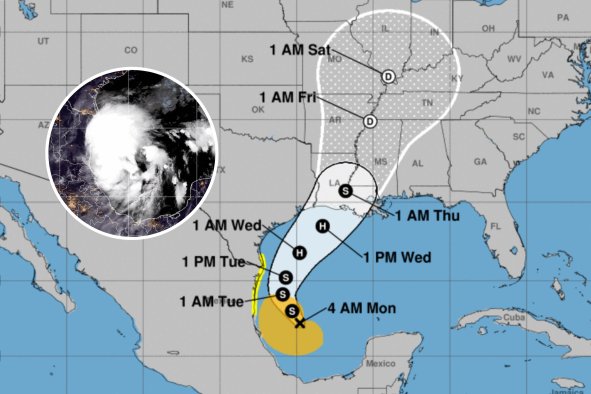A plume of "dark plasma" is heading toward Earth after being burped out by the sun.
This coronal mass ejection (CME) was flung out from a long magnetic filament on the sun's surface and is set to spark a geomagnetic storm in the Earth's atmosphere on Tuesday. These geomagnetic storms are forecast to hit G2, or "moderate" strength, and trigger northern lights above U.S. states as far south as New York and Idaho.
CMEs are giant clouds of solar plasma and a magnetic field that are spat out from magnetically active areas of the sun's surface, including sunspots and magnetic filaments. Solar filaments are large, elongated structures of dense, cooler plasma that are suspended above the sun's surface by magnetic fields. When the magnetic fields that support a filament become unstable, the filament can erupt, releasing large amounts of solar material into space.
Because it originates from a cooler filament, this CME is made of "dark plasma." Solar plasma generally consists of charged particles like electrons, protons and ions that are extremely hot and emit light in various wavelengths. Dark plasma, on the other hand, can appear cooler and less visible in higher-energy wavelengths because of its lower temperature, compared with the surrounding corona. While it's called "dark" in the context of solar imaging, it's still very hot and energetic by terrestrial standards.
When these CMEs collide with the Earth's magnetic field, they can trigger geomagnetic storms and result in auroras being seen farther away from the poles than usual. These storms are categorized from G1 to G5, with G5 being the most powerful and least common. The geomagnetic storm that sparked northern lights across all 50 U.S. states in May this year was the first G5 storm since 2003.
"Much like high-intensity hurricanes or tornadoes, the upper end of the classification is reserved for unusually strong events, and only the top few or less percent make it into these categories," Martin Connors, a professor of space science and physics at Canada's Athabasca University, told Newsweek.
"In the case of magnetic storms, rare extreme conditions on the sun and in the solar wind are needed, with the added variable [of the] magnetic field of the solar wind, which is hard to detect and very important in determining what will happen when the solar wind interacts with Earth's magnetic field," Connors said.
The storm forecast to occur as a result of the incoming CME is not anticipated to reach anything more powerful than a G2 storm.
"High-latitude power systems may experience voltage alarms, long-duration storms may cause transformer damage," says the National Oceanic and Atmospheric Administration's Space Weather Prediction Center. "HF radio propagation can fade at higher latitudes, and aurora has been seen as low as New York and Idaho (typically 55° geomagnetic lat.)."
Do you have a tip on a science story that Newsweek should be covering? Do you have a question about CMEs? Let us know via science@newsweek.com.
Disclaimer: The copyright of this article belongs to the original author. Reposting this article is solely for the purpose of information dissemination and does not constitute any investment advice. If there is any infringement, please contact us immediately. We will make corrections or deletions as necessary. Thank you.



